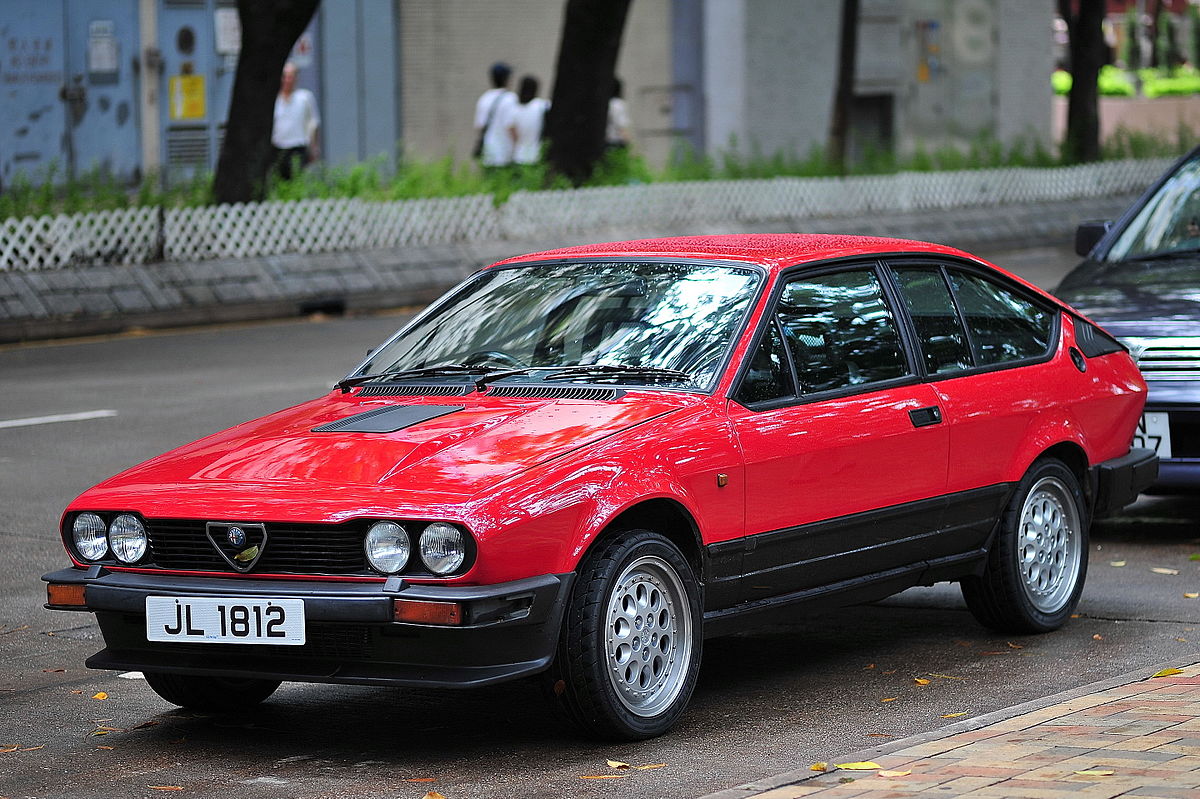" Alfa's 155 V6 TI is a racing car that Alfa Corse raced in European touring car racing from from 1993 to 1996. As you can see it's like the street-going 155 but just phatter, lower and generally more evil-looking. The 155 has always been a "

Alfa Romeo coupés: the power of three
Alfa needs a coupe...
It’s a sad state of affairs when a coupé is glaringly absent from Alfa Romeo’s model range, particularly in light of the marque’s track record of producing sporting cars with an abundance of brio.
Thankfully, Alfa Romeo has announced that a coupé version of the much-admired Giulia saloon will be launched this year. So whilst we wait for that to happen, let’s take a look at three of its most distinguished ancestors.
Montreal: a muscle car, Italian style.
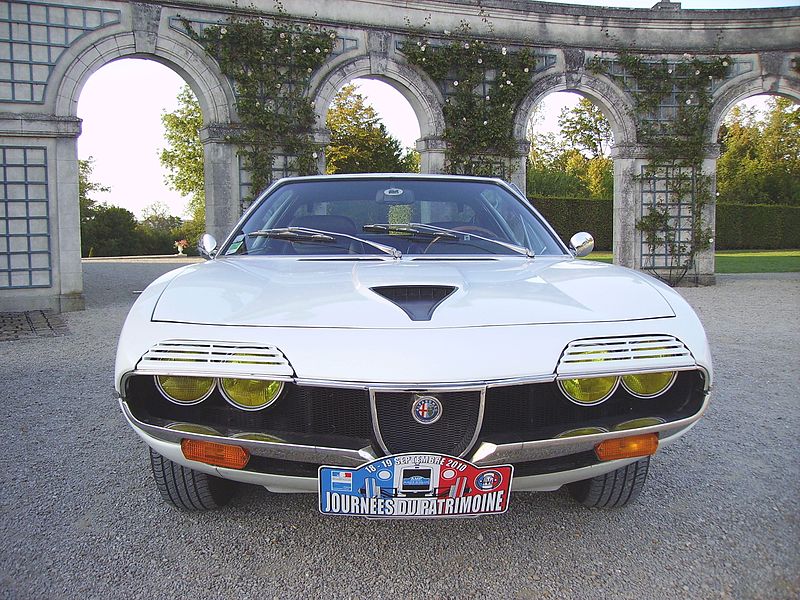
To petrolheads, the 1967 International and Universal Exposition (Expo 67 for short) bequeathed two important legacies.
The first was the site of what is now the Circuit Gilles Villeneuve, home of the Canadian Grand Prix since 1978.
And the second? The Alfa Romeo Montreal.
The Montreal came into being as a result of an approach made to Alfa Romeo by the organisers of Expo 67 to create and exhibit a car in the ‘Man the producer’ pavilion. A great honour, to be sure, but one that came with a rather large catch: the car needed to be ready in time for the opening of the Expo, a mere nine months hence.
Time constraints notwithstanding, it was too good an opportunity for the Milanese marque to pass up and they therefore set about the task of creating a suitable car with gusto. To save time, existing mechanics components were used: the 1570cc engine from the Giulia 1600 TI and the chassis from the Giulia Sprint GT. Of course, running gear was one thing, the body was quite another. And for that Alfa Romeo looked to Bertone and their brilliant young designer, Marcello Gandini.
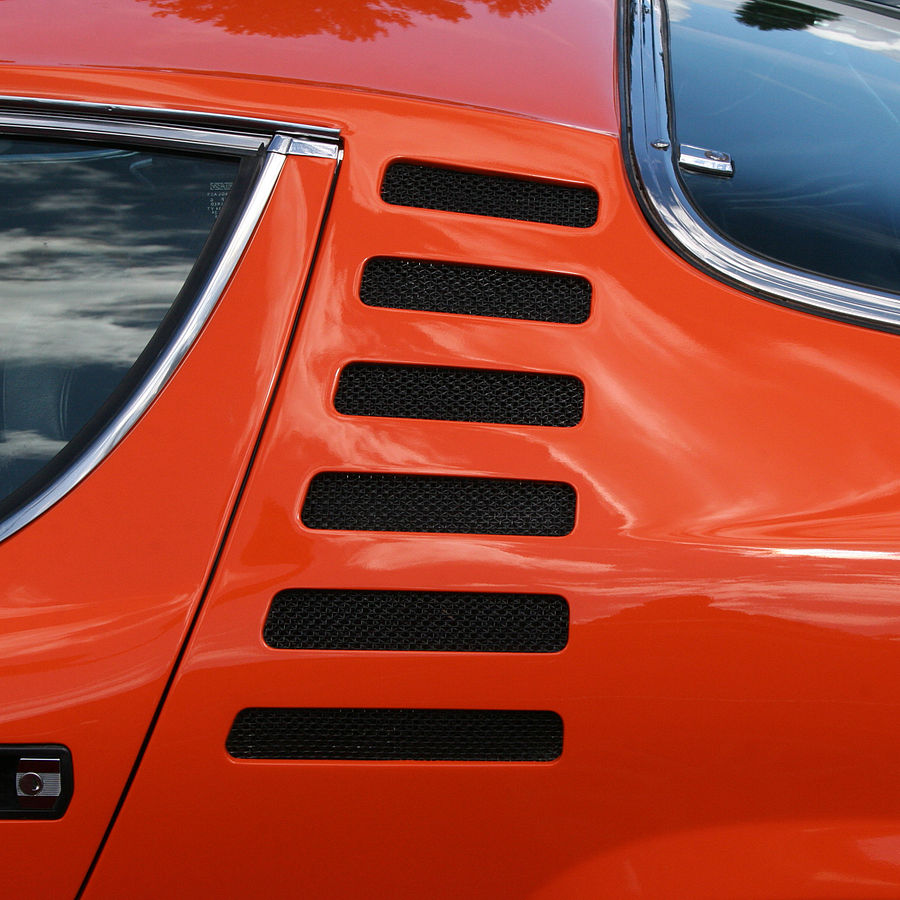
He did not disappoint, penning a 2+2 coupé with flowing, curvaceous lines and exquisite detailing. Two examples were built and both were displayed at Expo 67, creating such a stir amongst the press and public alike that they chose to call the hitherto unnamed coupé after Expo 67’s host city: Montreal.
Faced with such an enthusiastic reaction, Alfa decided to put the Montreal into production. That took them a little longer than nine months, however, and it wasn’t until the 1970 Geneva Motor Show that the production version was exhibited.
The car that was shown at Geneva, now officially known as the Montreal, differed little in appearance from the brace of prototypes that had wowed the crowds at Expo 67. Indeed, the production car retained many of the prototype’s most interesting features, particularly the slotted headlamp shields, which now rotated out of the way when the lights were turned on, and the row of vents to the rear of the B-pillar that suggested a mid-engined layout but were really only for cabin ventilation. Gone, though, was the single row of vertically oriented vents on the bonnet and in came a cleverly placed false NACA duct to disguise the ‘power bulge’ necessary to accommodate the production version’s engine.
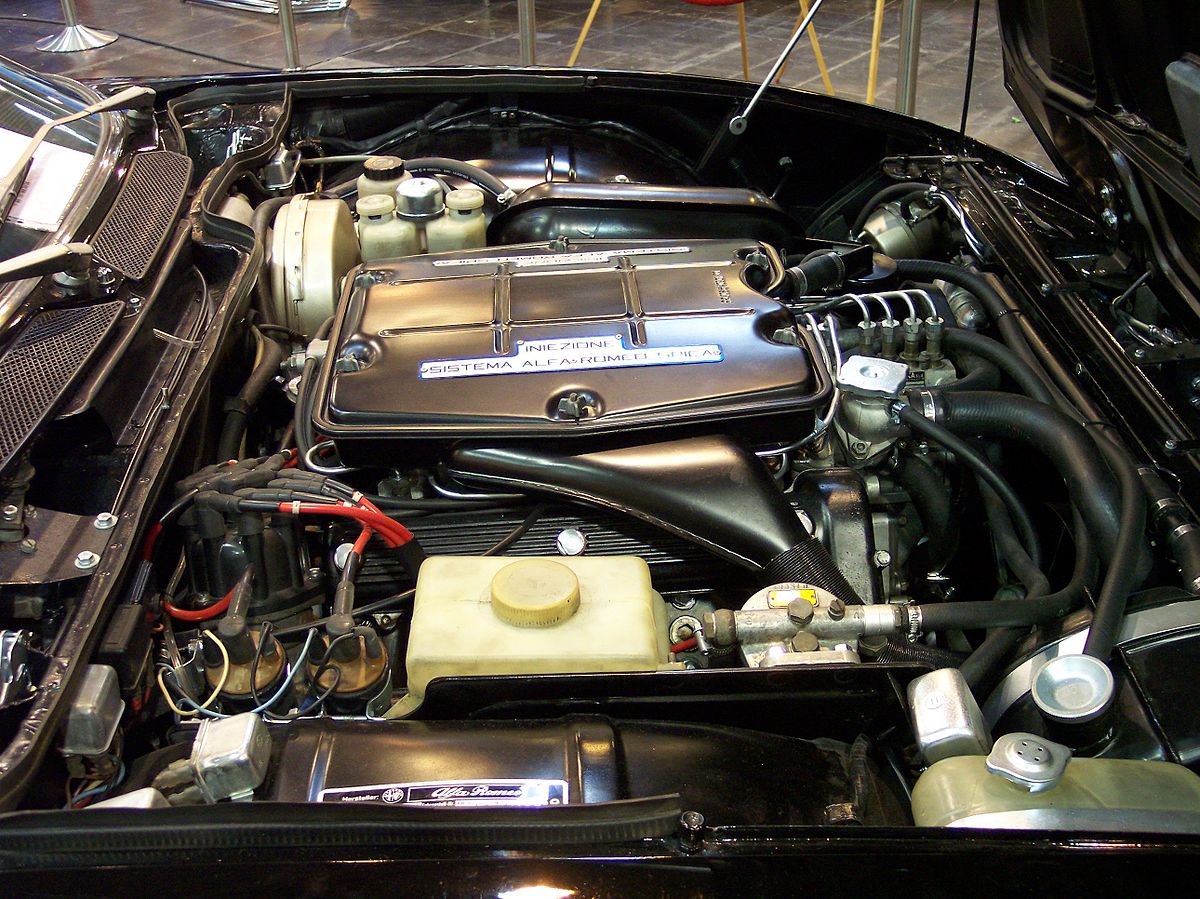
For whereas a four-pot, 90bhp engine was fine for a show car, it was obvious that the production version would need more power and more cylinders. It was therefore decided to equip the Montreal with an engine derived from the 2.0 litre, quad-cam V8 that powered the marque’s stunning Tipo 33 sports-prototype racer.
In its Montreal guise, the engine was bored and stroked out to 2593cc, fitted with SPICA fuel injection and put into a more benign state of tune. Even so, it still pumped out a very respectable 197bhp. Mated to a 5-speed ZF gearbox and limited slip differential, it endowed the Montreal with sufficient pace (137mph, 0-60 in under 7.5 seconds) to ensure that it had the go to match the show. And then there was the engine note: small-block V8 meets symphony orchestra.
And the Montreal wasn’t all engine and no chassis. It may have been a GT rather than an out-and-out supercar, but its Giulia-based suspension ensured that grip, handling and ride quality were all well up to the standards of the day.
Fuel economy, on the other hand, was not one of the Montreal’s stronger suits, with Autocar’s road testers being unable to squeeze more than 17 miles out of a gallon of petrol. But Alfa no doubt reasoned that if you had the wherewithal to buy a Montreal (at launch, it cost more than a Porsche 911 or Jaguar E-Type) then your pockets could surely also afford to feed it.
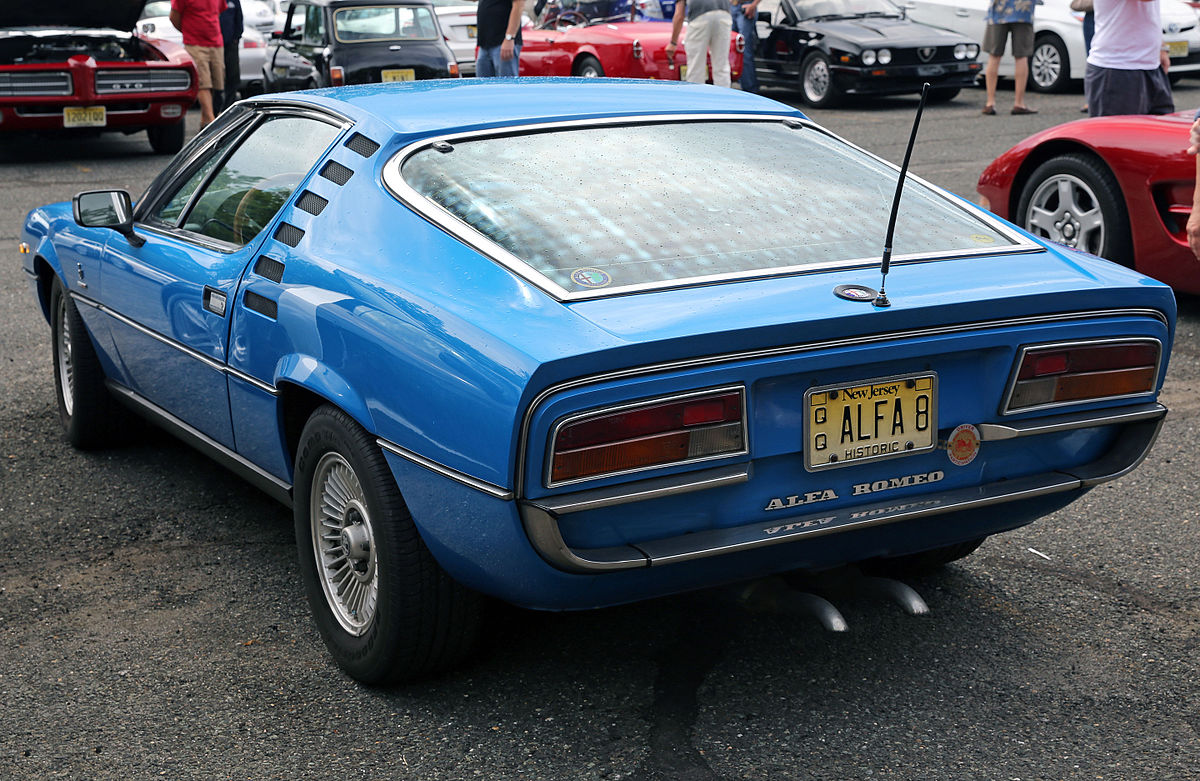
It might have devoured fuel but the Montreal was rather less adept at swallowing people. Nominally a 2+2, there was little or no legroom for rear seat passengers, thereby rendering the rear seats useful only as extra luggage space. But if it was short of space, the Montreal’s interior, with its wood-rimmed steering wheel, attractive cloth (leather was a cost option) seats, and ribbed headlining lacked for nothing when it came to style – even if the colour of the carpets sometimes seemed to have been chosen at random!
With such credentials one might have expected the Montreal to have become a roaring sales success, but its high price, Alfa Romeo’s decision not to offer it in the lucrative North American market, the effect of the 1973/4 fuel crisis and a consequent lack of development all played a part in depressing its sales figures. And although the Montreal continued to be produced until 1977, over 75% of the 3925 examples built rolled off the assembly line prior to 1973.
GTV6: a wedge of V6 loveliness
In 1972, Alfa Romeo introduced a new medium-sized sporting saloon: the Alfetta. With its transaxle gearbox layout offering excellent weight distribution and a range of rorty twin-cam engines providing motive power, the Alfetta was an ideal candidate for transformation into something with even more sporting appeal.
And so it proved, with a Giugiaro-penned coupé version, initially known as the Alfetta GT (the GTV tag came along a little later), hitting the showrooms in 1974. But whereas the Alfetta saloon, though handsome, was relatively conventional in appearance, the angular, wedge-shaped lines of the GT perfectly captured the design zeitgeist and, suitably refreshed, remained fresh and relevant well into the following decade.
But the GT didn’t just look good, it also scored highly as a driver’s car. Its engineering layout – front engine with a transaxle-mounted gearbox– ensured that its weight distribution was close to ideal. Add in a powerful twin-cam engine, 5-speed gearbox, de Dion rear axle and wide, low-profile tyres and you had the recipe for a car that went, gripped and handled very well indeed.
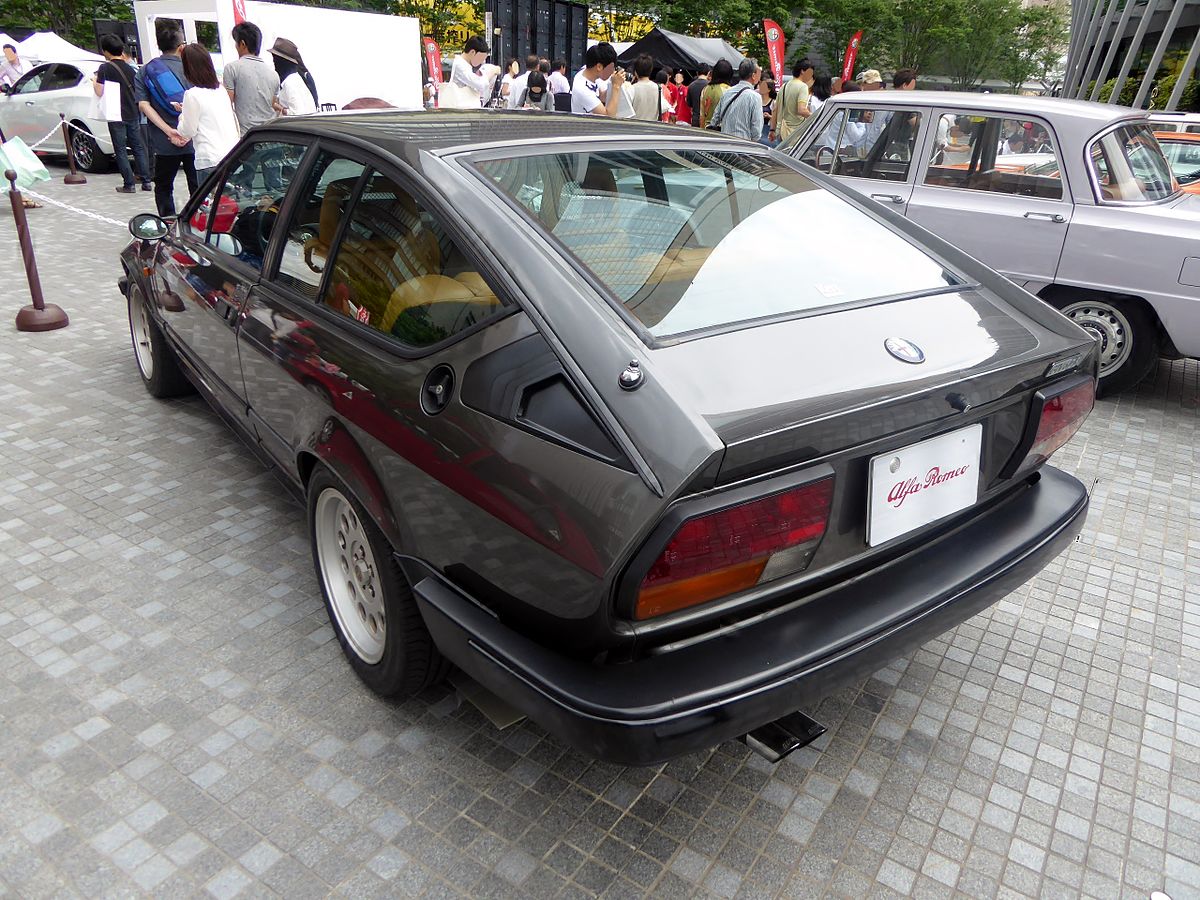
It was practical, too. In spite of being three inches shorter than the Alfetta saloon, the GT was relatively spacious for a coupé, with a good-sized boot and rear seats that could actually accommodate real people, albeit ones of modest dimensions. The interior styling was relatively conventional by 1970s standards, save for an idiosyncratic instrument layout that somehow managed to survive for almost a decade before being cast aside in favour of a more logical arrangement.
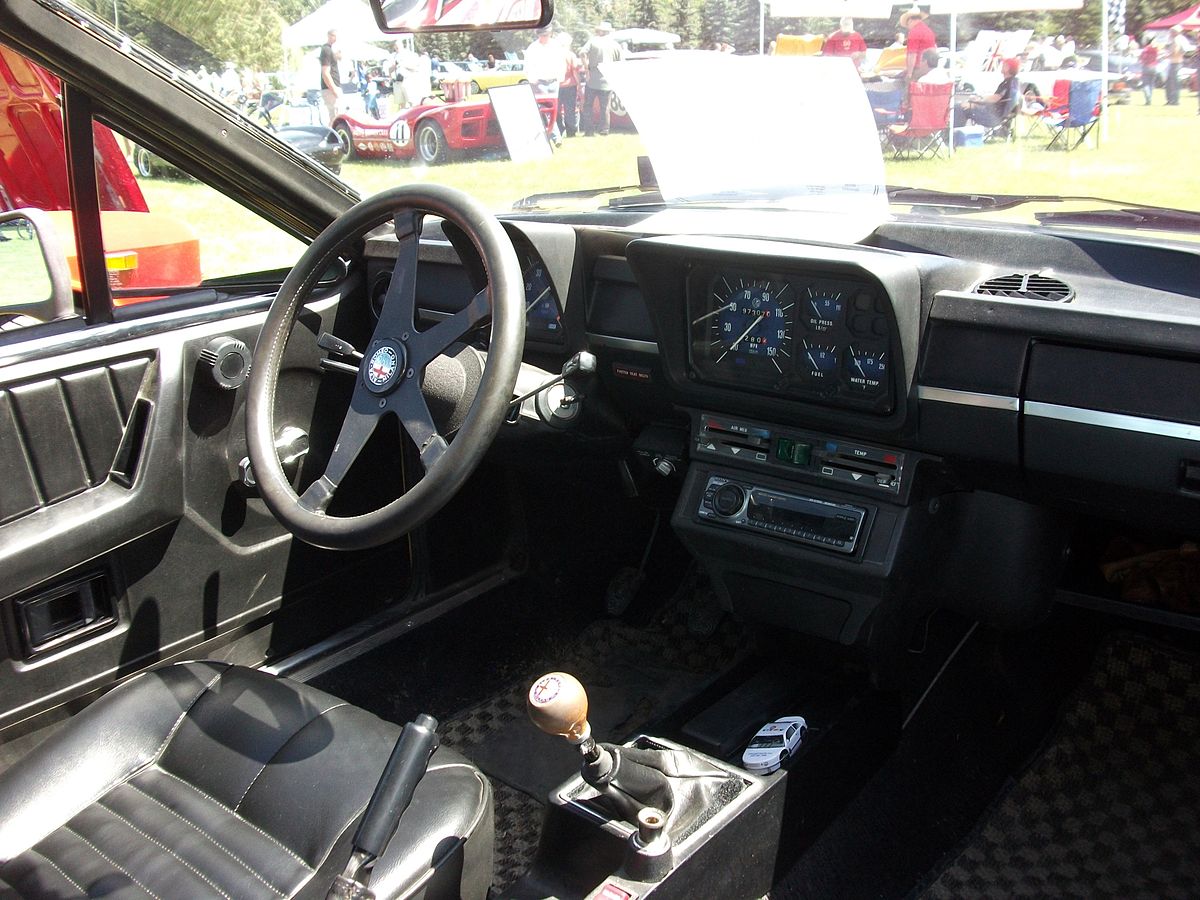
But good though it was, the GT didn’t fully realise its potential until 1980, when amidst a raft of other changes (including the dropping of the Alfetta name) a new variant was born: the GTV6. This new model featured a Giuseppe Busso-designed, 2492cc V6 engine that had hitherto only been seen in the Alfa 6 executive saloon.
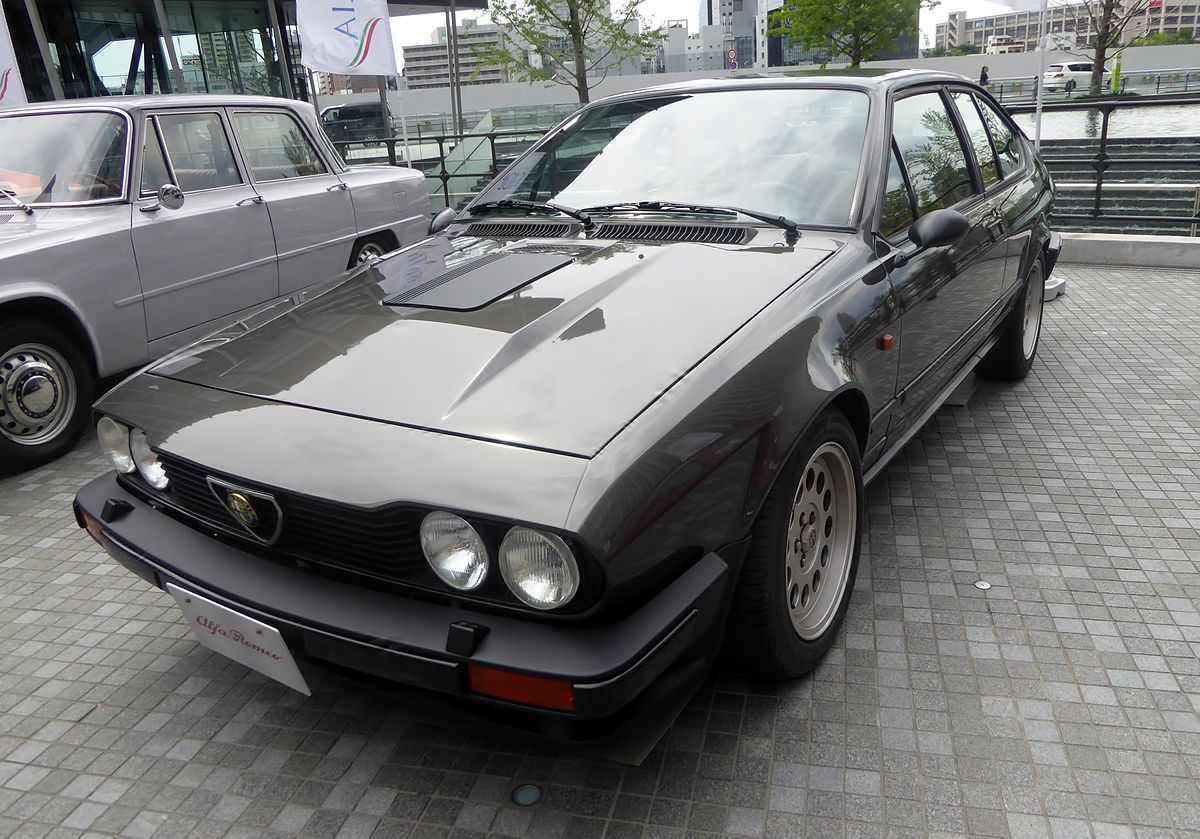
In its GTV6 incarnation, the all-alloy Busso engine gained Bosch L-Jetronic fuel injection and delivered 160bhp along with an engine note that can best be described as mechanical opera. Thus equipped, the GTV6 could attain 130mph and accelerate from 0 to 60 mph 8.8 seconds.
And there was more power to come – provided that you lived in South Africa, that is. Having already offered a turbocharged version of the GTV6, Alfa Romeo South Africa, with the aid of Autodelta, offered a 3.0 litre variant. Intended as a motorsport homologation special and limited to 200 examples, the 3.0 litre GTV6 was capable of just under 140 mph and could sprint from rest to 60mph at least 0.5 seconds faster than its smaller-engined sibling.
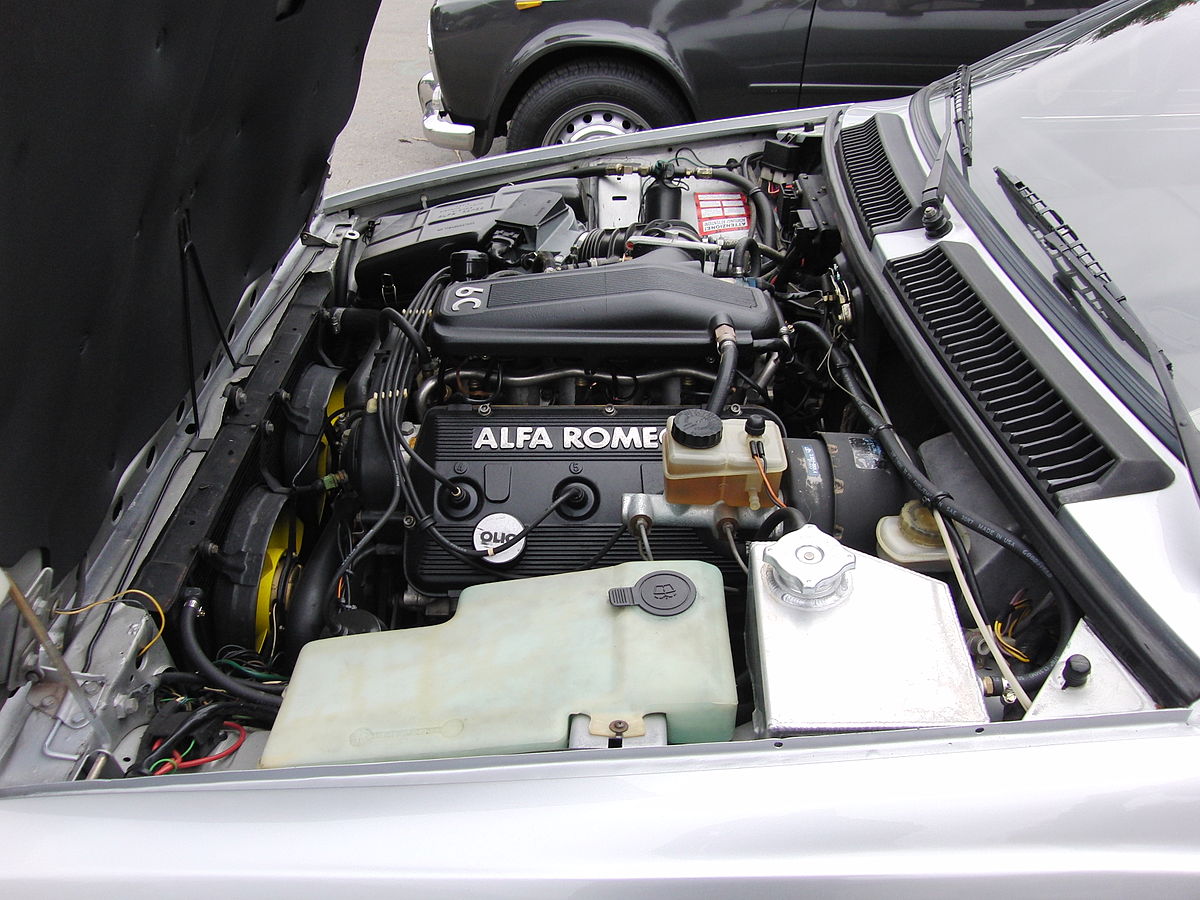
The GTV6 wasn’t just a fine road car; it more than held its own on the track, winning the manufacturer’s category of the European Touring Car Championship four times in succession and, in the hands of Andy Rouse, taking outright victory in the 1983 British Touring Car Championship.
Indeed, 1983 was a good year for the GTV6, with it making a memorable appearance in the otherwise forgettable James Bond film, Octopussy.
It enjoyed a few more summers in the sun, receiving a makeover for the 1984 model year that saw it through until production ended in 1986.
But although the GTV’s day was over, the V6 that did so much to enhance its golden years still had work to do…
Which takes us to 1989 and the Geneva Motor Show, when visitors might well have asked if their eyes were deceiving them. The cause of their puzzlement stood on the Alfa Romeo stand: a squat, red, pugnacious coupé; Brutalism on four wheels.
It bore the renowned Zagato logo on its flanks, but its styling was an in-house effort created largely through the use of Computer Aided Design.
When shown at Geneva in 1989, it was known as the ES 30. But when the first production cars hit the showrooms the following year, they bore a different name: SZ. The Italian press and public, however, gave it a moniker of their own choosing: Il Mostro. The Monster.
SZ: Monstrously good
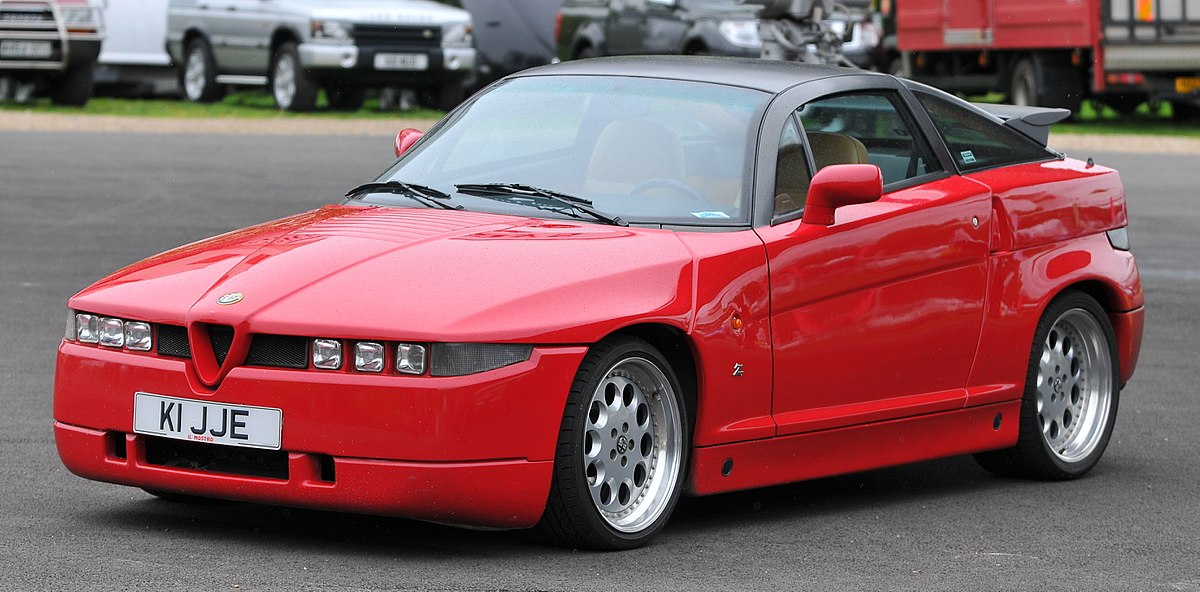
The SZ’s looks divided opinions from the moment the covers were lifted at Geneva. To some, it was hideous; to others, magnificently purposeful.
But there was a lot more to the SZ than its polarising looks. For starters, its construction – a mixture of steel (the Alfa 75-based floorpan and frame), composites (the Modar exterior panels) and aluminium (the roof) – was cutting edge in the late 1980s.
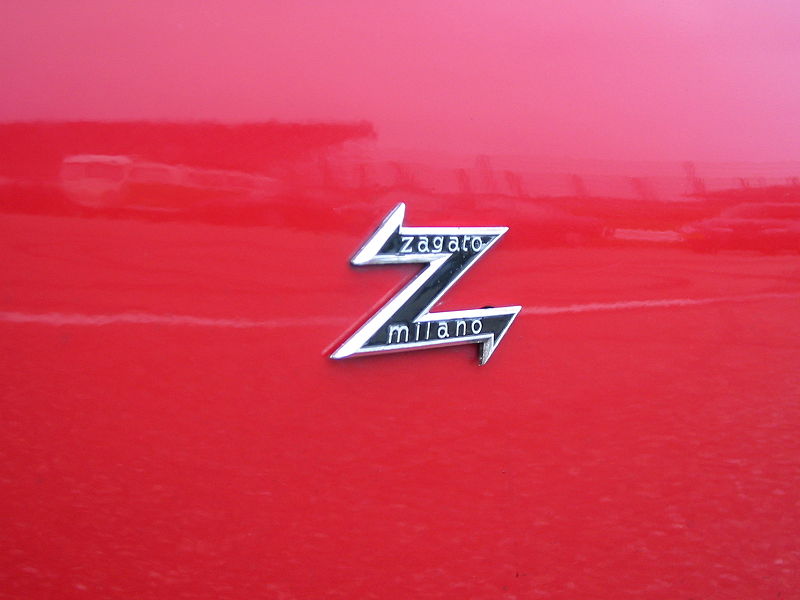
And then there was the suspension. At first glance, it looked like a typical Alfa set-up of the period: independent front suspension, de Dion rear axle. On closer inspection, though, it was obvious that the set-up had been tweaked by someone who knew precisely what they were doing. That someone was Giorgio Pianta, the man responsible for turning a succession of Fiats, Lancias and (later) Alfas into race and rally winners.
Having already worked his magic on the IMSA-spec Alfa 75, it was a relatively straightforward task for Pianta to fine-tune the SZ’s suspension, thus endowing it with a holy trinity of grip, poise and stylus-like steering. Consequently, the SZ stuck to the road like glue…provided that the road was dry.
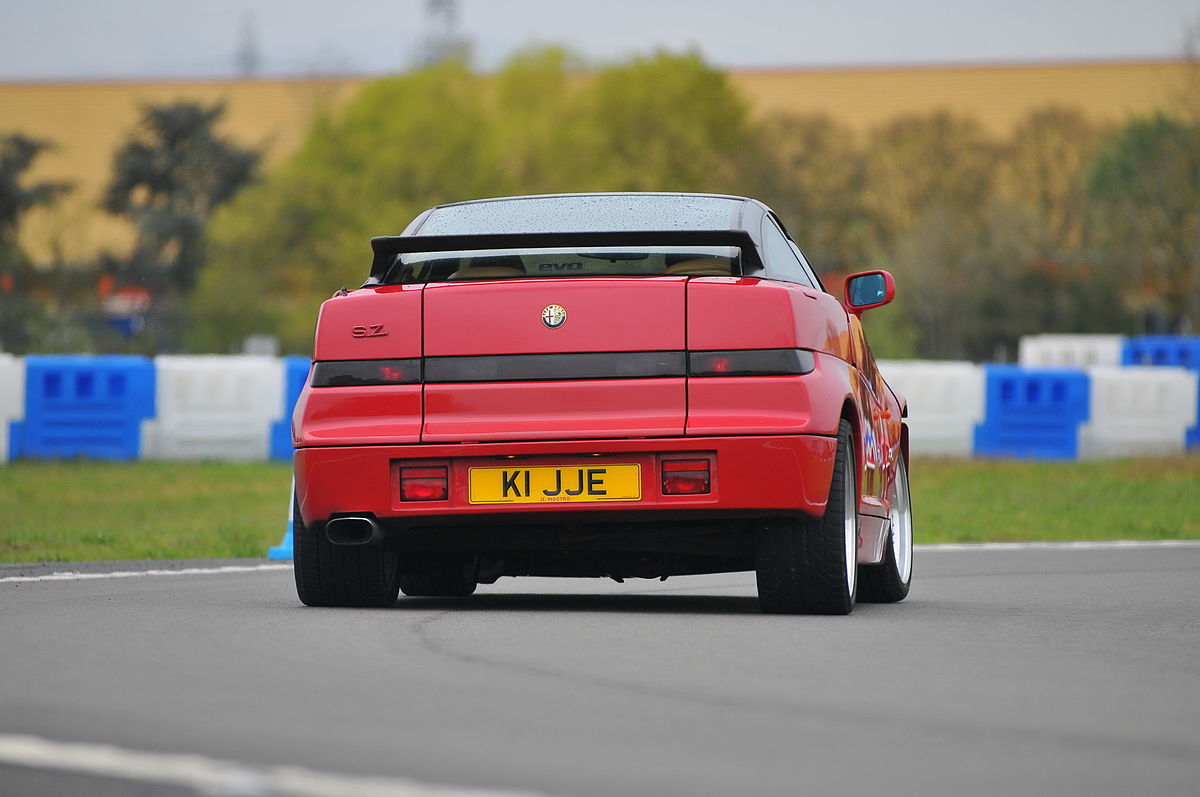
The SZ was, you see, a very different beast on wet roads. It wasn’t so much a case of oversteer being available at will, more that oversteer was happy to put in an appearance whether summoned or not. And with only the most primitive form of traction control (i.e. the driver’s right foot) and brakes that lacked ABS, it was fair to say that in insensitive hands the SZ could be as twitchy as someone testing a pogo stick in a minefield.
And there was one other thing: the SZ sat low to the ground. Too low, in fact, for anything other than a billiard table-smooth surface. Alfa’s solution to this problem was a simple one – fit Koni adjustable dampers and enable the driver to raise the ride height on the fly via a dash-mounted button. A good idea in theory but perhaps less so in practice.
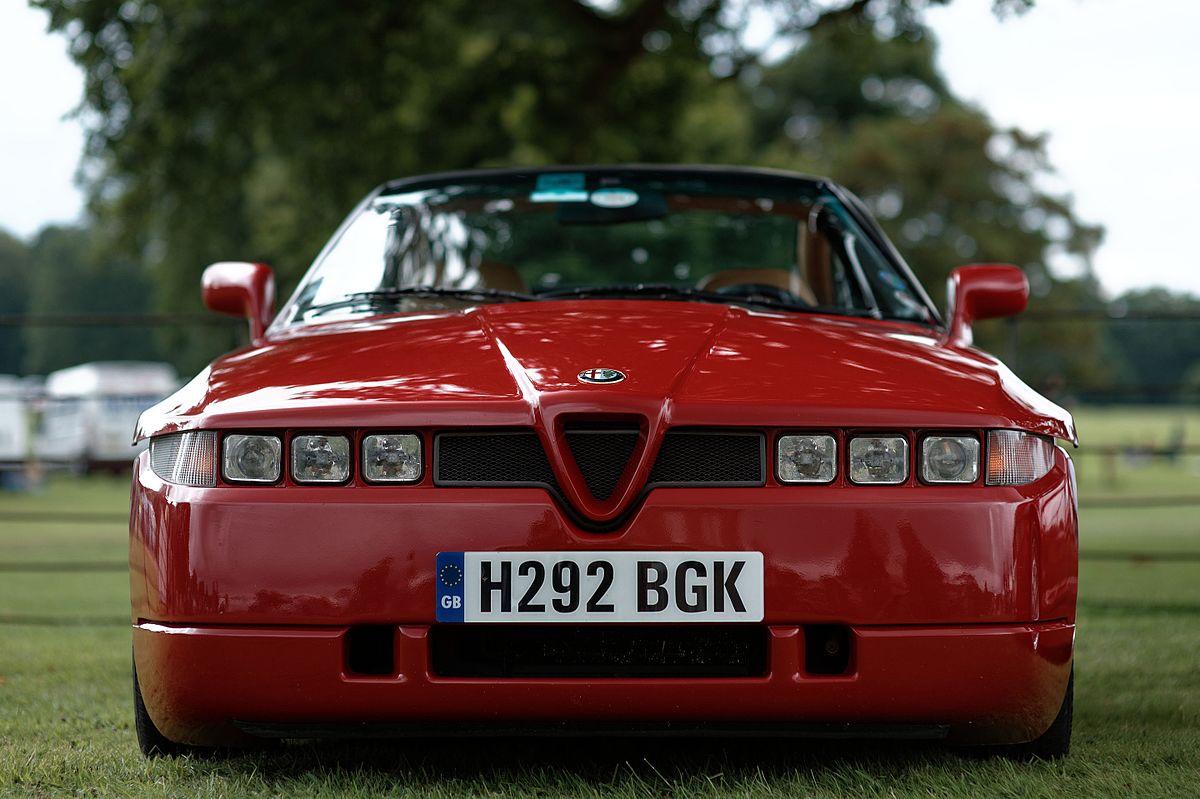
The engine was an evolution of that found in the GTV6. Increased in capacity to 2959cc, it was mated to a transaxle-mounted 5-speed gearbox and pumped out 207bhp accompanied by a suitably muscular soundtrack. In terms of performance this translated to a maximum speed of 147 mph and 0-60 mph in 7.0 seconds.
Moving inside, the SZ made no attempt to pretend that it could accommodate more than two people, with the area behind the seats being given over to luggage space. Which was just as well, as its tiny boot had room only for the toolkit and space-saving spare wheel.
The cabin was attractive rather than opulent and emphasised the SZ’s ethos as a driver’s car: chunky Momo steering wheel (adjustable for reach and rake), ample footroom, beautifully designed and supportive seats and good visibility in all directions except to the rear. The default driving position remained the short legs/ long arms posture so curiously beloved of Italian car ergonomics.
Thankfully, the degree of adjustment offered by the seats and steering wheel enabled most drivers to find a comfortable driving position.
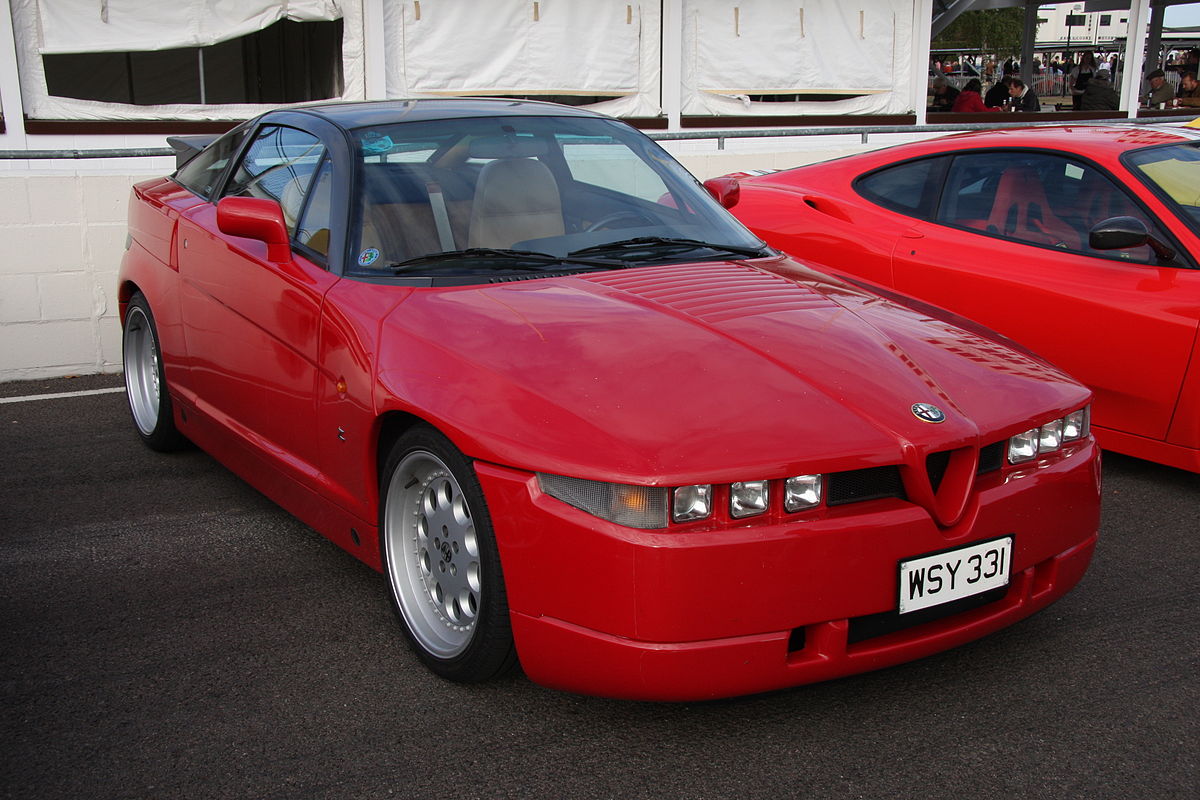
But with production limited to just over 1000 examples, not many people got to savour the view from the driver’s seat of an SZ. And those who did found themselves conducting operations from the left seat; in spite of being sold in the UK, the SZ was only built in LHD form. Still, at least you could have one in any colour you wanted…as long as it was Rosso Alfa. Or unless you bought the SZ’s open-top sibling, the RZ. But that’s another story…
So there you have it: three classic Alfa Romeos, all very different in terms of style yet bound together by a common thread of driver appeal. And in a world of increasingly anodyne cars, they’re even more alluring today than when they first turned their wheels.
The new Giulia coupé has some rather large wheel tracks to fill.
CLICK TO ENLARGE

